第16章 CHAPTER I.(1)
I was fifteen years of age when I was appointed reader to Mesdames.
I will begin by describing the Court at that period.
Maria Leczinska was just dead; the death of the Dauphin had preceded hers by three years; the Jesuits were suppressed, and piety was to be found at Court only in the apartments of Mesdames. The Duc de Choiseuil ruled.
Etiquette still existed at Court with all the forms it had acquired under Louis XIV.; dignity alone was wanting. As to gaiety, there was none.
Versailles was not the place at which to seek for assemblies where French spirit and grace were displayed. The focus of wit and intelligence was Paris.
The King thought of nothing but the pleasures of the chase: it might have been imagined that the courtiers indulged themselves in making epigrams by hearing them say seriously, on those days when the King did not hunt, "The King does nothing to-day."--[In sporting usance (see SOULAIRE, p.
316).]
The arrangement beforehand of his movements was also a matter of great importance with Louis XV. On the first day of the year he noted down in his almanac the days of departure for Compiegne, Fontainebleau, Choisy, etc. The weightiest matters, the most serious events, never deranged this distribution of his time.
Since the death of the Marquise de Pompadour, the King had no titled mistress; he contented himself with his seraglio in the Parc-aux-Cerfs.
It is well known that the monarch found the separation of Louis de Bourbon from the King of France the most animating feature of his royal existence. "They would have it so; they thought it for the best," was his way of expressing himself when the measures of his ministers were unsuccessful. The King delighted to manage the most disgraceful points of his private expenses himself; he one day sold to a head clerk in the War Department a house in which one of his mistresses had lodged; the contract ran in the name of Louis de Bourbon, and the purchaser himself took in a bag the price of the house in gold to the King in his private closet.
[Until recently little was known about the Parc-aux-Cerfs, and it was believed that a great number of young women had been maintained there at enormous expense. The investigations of M. J. A. Le Roi, given in his interesting work, "Curiosites Historiques sur Louis XIII., Louis XIV., Louis XV.," etc., Paris, Plon, 1864, have thrown fresh light upon the matter. The result he arrives at (see page 229 of his work) is that the house in question (No. 4 Rue St. Mederic, on the site of the Pare-aux-Cerfs, or breeding-place for deer, of Louis XIII) was very small, and could have held only one girl, the woman in charge of her, and a servant. Most of the girls left it only when about to be confined, and it sometimes stood vacant for five or six months. It may have been rented before the date of purchase, and other houses seem sometimes to have been used also; but in any case, it is evident that both the number of girls and the expense incurred have been absurdly exaggerated. The system flourished under Madame de Pompadour, but ceased as soon as Madame du Barry obtained full power over the King, and the house was then sold to M. J. B. Sevin for 16,000 livres, on 27th May, 1771, Louis not acting under the name of Louis de Bourbon, but as King,--"Vente par le Roi, notre Sire." In 1755 he had also been declared its purchaser in a similar manner. Thus, Madame Campan is in error in saying that the King made the contract as Louis de Bourbon.]--[And it also possible that Madam Campan was correct and that the house she refers to as sold for a "bag of gold" was another of the several of the seraglio establishments of Louis XV. D.W.]
Louis XV. saw very little of his family. He came every morning by a private staircase into the apartment of Madame Adelaide.
[Louis XV. seemed to feel for Madame Adelaide the tenderness he had had for the Duchesse de Bourgogne, his mother, who perished so suddenly, under the eyes and almost in the arms of Louis XIV. The birth of Madame Ad6laide, 23d March, 1732, was followed by that of Madame Victoire Louise Marie Therese on the 11th May, 1733. Louis had, besides, six daughters: Mesdames Sophie and Louise, who are mentioned in this chapter; the Princesses Marie and Felicite, who died young; Madame Henriette died at Versailles in 1752, aged twenty-four; and finally, Madame the Duchess of Parma, who also died at the Court.]
He often brought and drank there coffee that he had made himself. Madame Adelaide pulled a bell which apprised Madame Victoire of the King's visit; Madame Victoire, on rising to go to her sister's apartment, rang for Madame Sophie, who in her turn rang for Madame Louise. The apartments of Mesdames were of very large dimensions. Madame Louise occupied the farthest room. This latter lady was deformed and very short; the poor Princess used to run with all her might to join the daily meeting, but, having a number of rooms to cross, she frequently in spite of her haste, had only just time to embrace her father before he set out for the chase.